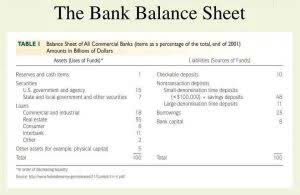Content
- Contra-Revenue Accounts
- How to Calculate Net Sales For Your Small Business
- Gross profit vs net profit – A comparison chart
- Sales Returns, Discounts and Allowances
- What are net sales?
- What are gross sales?
- What is the difference between net sales and gross profit?
- Gross Revenue vs. Net Revenue: What’s The Difference?

The Structured Query Language comprises several different data types that allow it to store different types of information… Get deep insights into your company’s MRR, churn and other vital metrics for your SaaS business. Business accounting can seem challenging, particularly if you are trying to get your books to apply for business financing.
What is the difference between gross and net?
Gross pay is what employees earn before taxes, benefits and other payroll deductions are withheld from their wages. The amount remaining after all withholdings are accounted for is net pay or take-home pay.
Usually there will be returns authorizations in place to record the reason for a return, allowing a company to identify any trends. If that’s the case, your company would have to see whether there were any opportunities to improve the manufacturing, quality control, delivery and other relevant processes, in order to keep the business profitable. You’ll use this formula to calculate how much of your business’s gross income is left over after accounting for all of the company’s expenses. Accountants can calculate gross sales right away because they become a part of the accounting record immediately after a transaction. Unlike gross sales, net sales are calculated at the end of a reporting period and often require accountants or bookkeepers to manually adjust financial records.
Contra-Revenue Accounts
Tracking net sales might be easy, but tracking metrics that affected it, factors that caused a surge or drop in sales, can only be possible if you track metrics on a regular basis. Cost of Sales represents a measurement of the cost efficiency of your business. By calculating it regularly, you can identify inefficiencies in your operations and opportunities to reduce costs and improve operating margins. Net Sales is a vital component of understanding your business’ financial performance and realities. Net sales and cost of goods are prime indicators of profitability and efficiency of the company.

The break-even point is a major inflection point in every business and sales organization. From sales funnel facts to sales email figures, here are the sales statistics that will help you grow leads and close deals. But they’re not the only sales metrics you should analyze and monitor regularly. As a sales manager, you can create a plan around working with other teams to address customer concerns and discuss ways to add value to increase profits.
How to Calculate Net Sales For Your Small Business
Understanding how net sales works is especially important when calculating your business’s revenue and determining your overall net earnings, also known as the bottom line. Knowing how to calculate net sales is one of the first steps to creating an accurate income statement for your business. Revenues are the sums that businesses earn through their operations, while expenses are the sums that businesses spend on their operations.

We also reference original research from other reputable publishers where appropriate. You can learn more about the standards we follow in producing accurate, unbiased content in oureditorial policy. To avoid getting overwhelmed, use a sales CRM like Zendesk Sell to keep tabs on all the important metrics. Zendesk automates the measurement of sales metrics so you can focus on keeping your top and bottom lines strong. This free guide examines three vital steps to establish a measurable sales pipeline that drives repeatable, predictable sales growth. Read on to learn what distinguishes these metrics and how you can use both of them to understand and increase your revenue.
Gross profit vs net profit – A comparison chart
Net sales already have discounts, returns and other allowances already factored in. In bookkeeping, accounting, and financial accounting, net sales are operating revenues earned by a company for selling its products or rendering its services. Also referred to as revenue, they are reported directly on the income statement as Sales or Net sales.
- This makes it difficult for externally facing analysts to identify the spread between gross and net sales.
- We’re firm believers in the Golden Rule, which is why editorial opinions are ours alone and have not been previously reviewed, approved, or endorsed by included advertisers.
- Meanwhile, net sales gives a more accurate picture of how much money a company actually made, because it does factor in costs like discounts from coupons and other sales allowances.
- A wrong calculation of gross sales figures would ultimately impact the calculation and accuracy of the net sales figure of an organization.
- The purpose is to get a sense of the overall revenue of your business within a selected period of time.
Allowances are price reductions offered to customers who purchased a defective item. They give the disgruntled customers a partial refund of 30 percent off the initial price to keep their business. The collective allowance amount comes to $3,500, bringing down the total revenue to $121,500. Most small businesses https://www.bookstime.com/ review their income statements monthly, quarterly, and annually. This allows them to view a small window of profits from the past few weeks along with a big-picture view of revenue growth over time. These documents can guide organizational change to cut expenses or seek more revenue-producing opportunities.
Sales Returns, Discounts and Allowances
Net sales is your total sales revenue left after deductions for sales returns, sale allowances, and discounts have been calculated. You can calculate both gross and net profit using your income statement. An income statement shows your company’s total revenue and cost of goods sold, followed by the operating expenses, interest and taxes. Net sales is your total sales revenue less returns, allowances and discounts. It equals your net sales after subtracting all expenses and adding any non-sales revenue. Sales returns refer to products that were sold and delivered to customers and then subsequently returned by the customer because of a lack of satisfaction with the product for one reason or another. When an unsatisfied customer returns a product, the company must give the customer his or her money back.
- You need to track all of these numbers for strategic and operational decision making.
- Net Sales Revenues shall not include shipping and handling charges and sales, use, VAT and other applicable taxes.
- They give the disgruntled customers a partial refund of 30 percent off the initial price to keep their business.
- Typically, this accounts for the actual sales made from customers purchasing its products and services.
To get Gross sales, you take the units sold multiply them by the selling price for each unit. Sales allowances describe the reduction in price of a product due to defects of a product. Alternatively, if more products are being returned because they’re not what the customer expected, Gross Sales vs Net Sales you might be inadvertently misrepresenting the product. Are your salespeople giving customers all the information they need to make an informed decision? Net profit margin, also called return on revenue, is another metric based on your company’s revenue – this time your net revenue.
What are net sales?
You’ll report your business’s gross revenue on your income or cash flow statement as top-line revenue. It’s equal to your gross sales – the total amount your company took in over a certain period of time. They are traditionally located at the top of the statement reporting the revenue you made during that specific time period. Sales revenue can be listed on the income statement as either the gross revenue amount or net revenue. The definition of gross revenue is the total amount of money earned during a particular accounting time frame. All the gross sales that a business makes from selling services and goods fall in the category of gross revenue. Most states in the United States impose a sales tax on the purchase of retail goods.
What is the difference between gross profit and net profit?
Net profit reflects the amount of money you are left with after having paid all your allowable business expenses, while gross profit is the amount of money you are left with after deducting the cost of goods sold from revenue. You need to calculate gross profit to arrive at net profit.
In a survey of nearly 200 senior marketing managers, 70 percent responded that they found the “sales total” metric very useful. Sales Returns and Allowances and Sales Discounts are contra-revenue accounts. Sales tax isn’t included as part of the revenue for a company — It’s revenue for the government. The Ascent is a Motley Fool service that rates and reviews essential products for your everyday money matters.
What are gross sales?
Sellers typically calculate and collect sales tax at the time of purchase. However, a company’s total net sales figure doesn’t include the amount of sales tax that it collected on those sales transactions.

From these totals we can subtract deductions, such as discounts, allowances, and returns, in order to see what the net sales were. If the sales discounts for early payment are increasing, this could be a good thing, as it means more of your customers are paying their bills promptly. If it’s too high and significantly affects the final sales figure, however, it might be the case that your early payment terms are too generous. It would then be sensible for your company to re-evaluate those terms and see if they can be changed to remain competitive without negatively affecting cash flow. As the sum of all sales made, the question of how to calculate gross sales is a straightforward one to answer. So, if you’ve sold 200 units in Q1 and the unit price is $40, your gross sales revenue for that time period equals $8,000.
At each time period’s end, a number of closing entries are made in order to calculate income and to clear the accounts for reuse in the next period. Revenues are summed up in a single account, and expenses are summed up in a single account, before both are then summed up as the business’ net income for the period. For example, if a business had $2,000 in net sales revenue and $1,200 in total expenses, its income is calculated to be $800 for the period. Once income has been calculated, it is either distributed to the business’ owners and/or investors or transferred to either retained earnings or capital accounts, depending on the business. While gross sales represent the total sales before discounts, returns, and rebates, net sales reflects the value of sales after accounting for those things. The difference between the two values is what helps analysts to determine the quality of income. Net sales helps to assess how many dollars in revenue stays with the business for every dollar in gross receipts.
While gross sales provides information such as how well your products are selling and how successful your business is in reaching customers, tracking net sales totals are just as important. By recording the adjustments this way, gross sales will be reduced from the original $62,000 by the debit amounts in the contra accounts, with net sales revenue totalling $55,650.
Discounts are generally available for every customer, but allowances are mostly applied to issues with the products or their orders. For example, if a product has a defect or damage, an allowance may be provided because that particular product is not up to the standard of other similar products ordered.
- While net sales accounts for the revenue a business brings in from the sale of its goods or services (minus discounts, returns, etc.), there are a number of important factors that it doesn’t account for.
- However, a company’s total net sales figure doesn’t include the amount of sales tax that it collected on those sales transactions.
- A small gap, on the other hand, can represent a stable, efficient company with a low return rate and a limited need for discounts.
- To measure success, take a close look at your company’s sales figures.
- Certain industries focus heavily on gross sales, such as retail, while others view it in conjunction with other key financial metrics.
- Sales discounts refer to reductions in sales prices to customers based on discounts, such as 2/10 net 30 credit terms.

